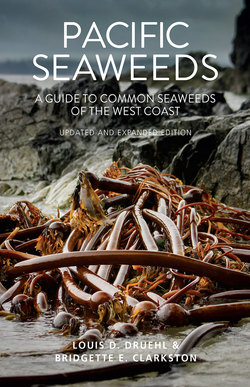Читать книгу Pacific Seaweeds - Louis Druehl - Страница 12
На сайте Литреса книга снята с продажи.
ОглавлениеPacific Seaweeds
12
and scientific chemicals, plant fertilizers and pesticides, and livestock feed supplements; are a renewable energy source; and can provide services in nature that would be impossibly expensive to reproduce. The potential pharmaceutical uses of seaweeds is still an exciting horizon, as it was in the original Pacific Seaweeds, with exploratory tests indicating seaweed constituents may combat hypertension (high blood pressure), some cancers and stroke. Perhaps the newest frontier is the potential for seaweeds to extract carbon dioxide from seawater, thereby reducing the effects of ocean acidification on shellfish. Because seaweeds are so diverse, and so distinct from flowering plants and fungi, we can expect to continue discovering new, exotic compounds and new uses beneficial to humankind.
The seaweeds dealt with in this guide are major elements of the temperate marine flora extending from southeast Alaska (60°N, just north of Homer) to central California (34°N, just south of Santa Barbara at Point Conception; Figure 1). Biogeographers refer to this stretch of coast as the Cold Temperate Region—this region is the focus of this book. The coastline west of southeast Alaska is the Arctic Region, and south of Point Conception is the Warm Temperate Region. General seawater temperatures define
Figure 1. This guide covers the Cold Temperate biogeographic region of the Pacific coast from Homer, AK, to Point Conception, CA.
Arctic Region
